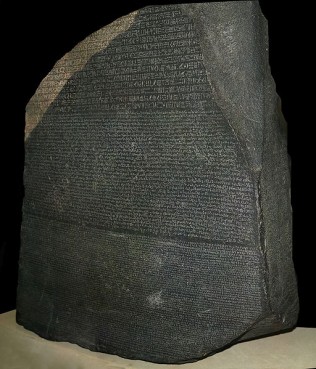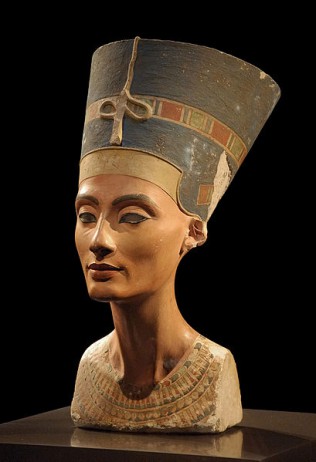Across global civilizations the axiom “to the victor goes the spoils” has ruled nation building and enhanced museum collections. Colonial expansion, imperialism and war have been the basis for many of the cultural collections currently housed in national museums and archives around the world.
Despite anger on the part of countries that lost cultural treasures, formal global agreements on the illegality of plundering or removing cultural artifacts from a country in wartime or otherwise were not uniformly established until after World War II. In fact, it was as a direct result of widespread looting of cultural heritage during the Second World War that the Convention for the Protection of Cultural Property in the Event of Armed Conflict was enacted at the Hague Convention of 1954. According to the United Nations Educational, Scientific and Cultural Organization (UNESCO) it was the “first international treaty of a worldwide vocation focusing exclusively on the protection of cultural heritage in the event of armed conflict.”
Nevertheless, the treaty did not provide for the creation of a standard of practice for returning stolen artifacts and had no retroactive standing on objects already housed in museums outside their countries of origin. In 1970 UNESCO attempted to address this concern by establishing the Convention on the Means of Prohibiting and Preventing the Illicit Import, Export and Transfer of Ownership of Cultural Property, which includes preventive measures, provisions for restitution and a framework for international cooperation.
UNESCO strengthened the 1970 Convention by forming the Intergovernmental Committee for Promoting the Return of Cultural Property to its Countries of Origin or its Restitution in case of Illicit Appropriation. The Committee consists of 22 member states elected by the General Conference of UNESCO. According to its statutes, the Committee’s purpose is to “facilitate bilateral negotiations for the restitution of any cultural property which has a fundamental significance from the point of view of the spiritual values and cultural heritage of the people of a Member State or Associate Member of UNESCO and which has been lost as a result of colonial or foreign occupation or as a result of illicit appropriation.”
In 1995, the International Institute for the Unification of Private Law (also known as UNIDROIT) drafted the Convention on Stolen or Illegally Exported Cultural Objects, which called for global recognition and return of artifacts that had been illicitly removed from their countries of origin.

The establishment of these treaties created a formal pathway for ongoing diplomatic petitions and arguments for the return of native artifacts and even human remains. Major defendants in these cases – mostly Western and colonial nations such as England, Germany, France, and the United States – are accused of heritage theft or cultural vandalism. The countries seeking redress are generally in Latin America, Asia and Africa, although European nations are not invulnerable to cultural heritage losses, with Italy, France, Russia, Greece and Turkey ranking highest in incidents of art and artifact trafficking, according to Interpol.
Currently, the most hotly contested artifacts include:
- the Elgin Marbles, a group of sculptures, architectural features and other marble pieces taken from the Parthenon and other buildings on the Acropolis in Athens between 1801 and 1805 by the British ambassador to the Ottoman Empire, Lord Elgin, and eventually deposited in the British Museum;
- the Benin Bronzes, a collection of brass pieces from the royal palace in Benin City (modern Nigeria), cast during the 16th and 17th centuries, seized by British forces during the Punitive Expedition of 1897 and now housed in the British Museum;
- the Rosetta Stone, the tablet that became the key to the understanding and transcribing of Egyptian hieroglyphics, also in the British Museum; and
- the famous bust of Egyptian queen Nefertiti, held at the Neues Museum in Berlin, Germany.
Only very recently have agreements been reached over a number of other disputed artifacts, including:
- the pre-Colombian Peruvian relics of Machu Picchu “discovered” by Hiram Bingham III from 1911 to 1915 and displayed at Yale University’s Peabody Museum;
- the Korean Uigwe Royal Books, which document and illustrate protocols of the Korean Joseon Dynasty (1392-1910) and were seized by France and Japan during periods of military invasion and occupation;
- a ceremonial Aztec headdress given by Montezuma to the Conquistador Hernán Cortés, located in the Austrian Museum of Ethnology; and
- over 15,000 artifacts looted from the National Museum of Iraq.
Each collection represents a significant cultural time period as well as a source of national pride and heritage. Zahi Hawass, Chief of Egypt’s Supreme Council of Antiquities, sees the return of the Rosetta Stone as imperative. “If the British want to be remembered, if they want to restore their reputation, they should volunteer to return the Rosetta Stone because it is the icon of our Egyptian identity,” Hawass said in 2003. He uses the same appeal for the return of the Nefertiti Bust from Germany.
Greece presently argues for the return of the Elgin Marbles with threats of barring British archaeologists from participating in further excavations in Greece or banning the touring of treasures in Greek possession to Great Britain.
With ongoing appeals and the backing of UNESCO there seems to be a positive trend in nations returning historical artifacts to their countries of origin – albeit a few pieces or collections at a time. Several key returns made the 2000s a banner decade for art repatriation.
In January 2008 a 2,500-year-old vase known as the Euphronios Krater was returned from the New York Metropolitan Museum to its homeland of Italy. One of only 27 known pieces by sculptor Euphronios still in existence, its transferal to Rome was hailed as a victory for the Italian state by Rocco Buttiglione, the cultural minister who negotiated its return.
In November 2010 the Japanese government agreed to return over 1,000 artifacts plundered from lorem ipsumSouth Korea during its colonial occupation from 1910-1945.The Joseon Dynasty Uigwe were included in this return. France also agreed to return the Uigwe books in its possession to South Korea in a five-year renewable lease.
Similarly, on December 3, 2010, the Yale University Peabody Museum and the government of Peru presented a signed memorandum of understanding providing for the repatriation of the remainder of the Machu Picchu artifacts over a two-year period, with all objects to be returned by the end of 2012. “We are very pleased that Yale University has responded so positively,” announced Peruvian President Alan GarcÌa. In response, Yale University’s negotiator and anthropology professor Richard Burger told Connecticut Public Radio, “Machu Picchu really has become almost synonymous with Peru. So we don’t want to see this as a general precedent, but certainly you can understand that if hundreds of thousands, almost a million people are visiting Machu Picchu a year – if our goal is to share the knowledge that we have and share the objects, this is much more effectively done in Cuzco than it is in New Haven.”
But perhaps the greatest of the successes of the UNESCO/UNIDROIT treaties is the ongoing return of pieces looted from the National Museum of Iraq. In 2003, at the outbreak of the Iraq War, UNESCO organized an emergency committee meeting to address rescuing and preserving the contents of the Baghdad Museum. The meeting was held as a preemptive strike should looting occur. As feared the Babylonian collections were almost immediately ransacked. But the quick actions of the committee proved fruitful. That same year an initial 1,700 items were recovered through a UNESCO amnesty policy and more than 1,000 more were seized in raids and checkpoints at borders and airport customs. As recently as 2008, more than 3,200 missing Babylonian relics looted from the museum and archaeological sites throughout Iraq were released to Iraq by Syrian and Jordanian authorities. On September 7, 2010, the Iraqi Foreign Ministry held a display sampling some of the roughly 5,000 pieces from the National Museum that have been recovered to date.
And while the Elgin Marbles, Rosetta Stone and Nefertiti Bust remain locked in global custody battles the dispute over the so-called Montezuma headdress has prompted a unique trade agreement. Although Mexico had taken its appeal to the United Nations, the country’s requests for the return of the headdress had previously been ignored by the Austrian Museum of Ethnology. According to a statement by Mexico’s National Institute of Anthropology and History a compromise of “common cultural legacy” is in the works. On the table is a temporary exchange of the headdress for the ceremonial carriage used by Emperor Maximilian, a member of the Austrian royal family. The carriage is housed in Mexico because Maximilian was imposed as ruler of Mexico by the French from 1863 to 1867.
The return of such artifacts is historic and reflects what many hope is an ongoing ethical trend in archaeology. Speaking about the Mexico-Austria agreement, Mexico’s Foreign Relations Undersecretary Lourdes Aranda said optimistically, “I believe this could be an example for other cases in the world.”
Read Ethical Traveler's Reprint Policy.

